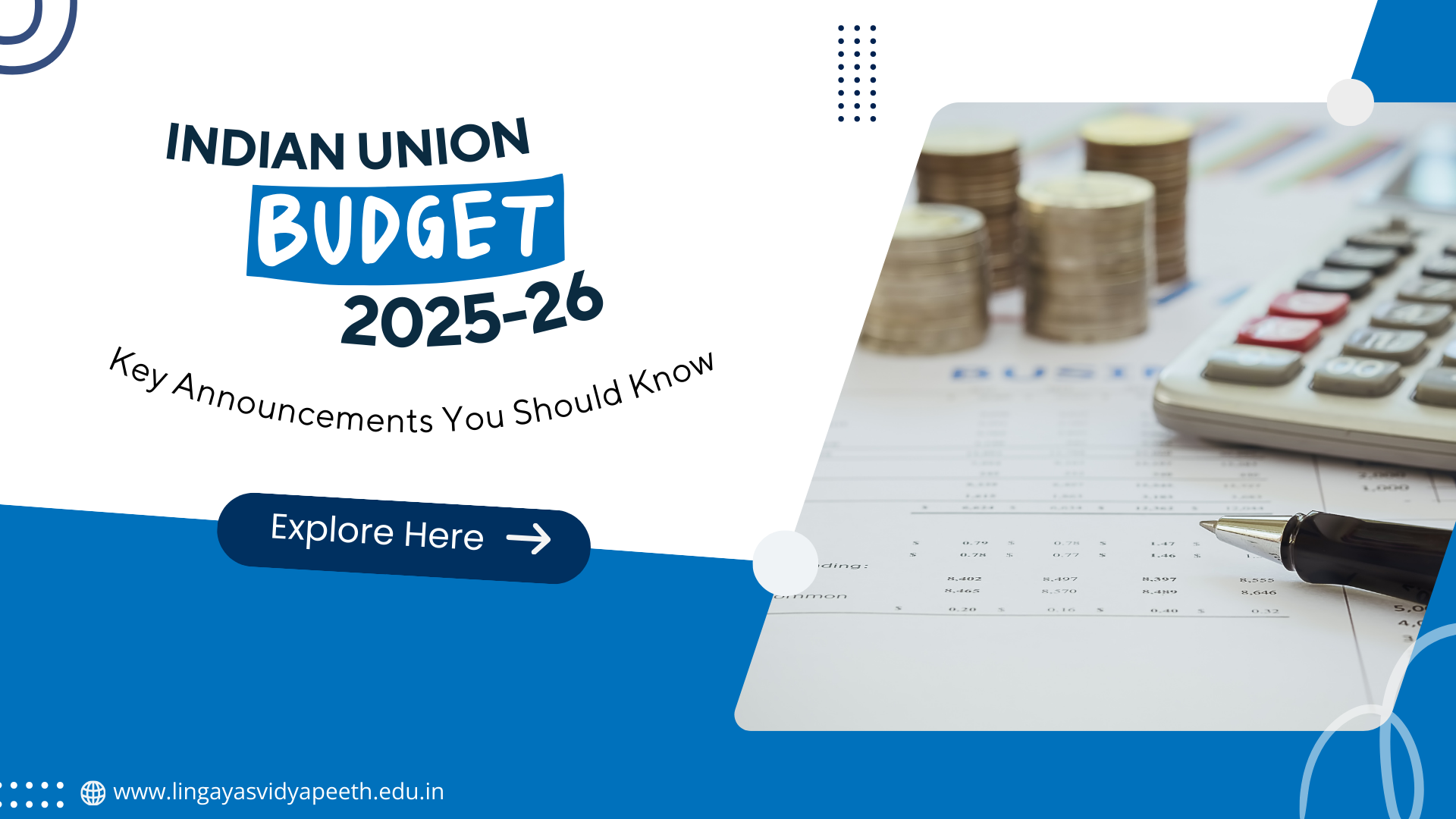Home » Highlights of Indian Union Budget 2025-26

The Union Budget is the annual financial statement of the Government of India, outlining its revenue and expenditure for the upcoming fiscal year. It serves as a blueprint for the nation’s economic priorities, policies, and reforms.
The Union Budget 2025-26, presented by Finance Minister Nirmala Sitharaman on February 1, 2025, is a progressive and inclusive roadmap aimed at fostering economic growth, empowering citizens, and achieving self-reliance. With a strong focus on middle-class welfare, agriculture, MSMEs, and innovation, this budget has introduced several transformative measures.
Micro, Small, and Medium Enterprises (MSMEs) are the backbone of the Indian economy. To support their growth, the budget has enhanced credit guarantee coverage from ₹5 crore to ₹10 crore. Additionally, a National Manufacturing Mission has been announced to further the ‘Make in India’ initiative, covering small, medium, and large industries.
The fiscal deficit for FY-25 is estimated at 4.8% of GDP, with a target to reduce it to 4.4% in FY-26. This reflects the government’s commitment to fiscal discipline while ensuring sustained economic growth.
AI in Education: Transforming the Learning Experience
Tax Planning Tips for Small Business Owners in 2024
| Cheaper | Costlier |
|
|
Conclusion:
The Union Budget 2025-26 is designed to provide relief to taxpayers, stimulate economic growth, and foster sectoral development. With a strong focus on agriculture, MSMEs, infrastructure, and technological innovation, the budget aims to create a self-reliant, globally competitive economy.
From
Lingaya’s Vidyapeeth
Best Colleges in Faridabad
RECENT POSTS
CATEGORIES
TAGS
Agriculture Agriculture future AI Architecture artificial intelligence BA English BA Psychology BTech CSE BTech Engineering Business management career Career-Specific Education career guide Career Opportunities career option career scope Civil engineering commerce and management Computer Science Computer science engineering Data science degree education Engineering Engineering students English Literature english program Exam tips Fashion Design Fashion design course Higher Education Journalism journalism and mass communication law Law career Machine Learning MA Psychology Master degree mathematics MBA Mechanical Engineering Pharmacy Psychology Research and Development students
University Address: Nachauli, Jasana Road, Faridabad, Haryana
Toll Free: 1800-120-4613
Mobile : 8447744303 | 8447744304 | 8447744306 | 8447744309
Address: C-72, Second Floor, Shivalik, Near Malviya Nagar,
Above HDFC Bank, New Delhi 110017
Ph.No. - 011-46570515 / 45138169 / 41755703 / +91-7303152412
Jagmani Kutir, Ground Floor, Road No-1, Rajeev Nagar,
Near Darbar Marriage Hall, Patna-800024, Bihar
Contact No: 9818352069/8130120095
Mail: [email protected]
Copyrights © 1998 - 2025 Lingaya's Vidyapeeth (Deemed To Be University). All rights reserved.
It is important to note that the following email IDs and domains are fraudulent and do not belong to our university.
LV only conducts physical/online verification of any document related to examination on the following email id: